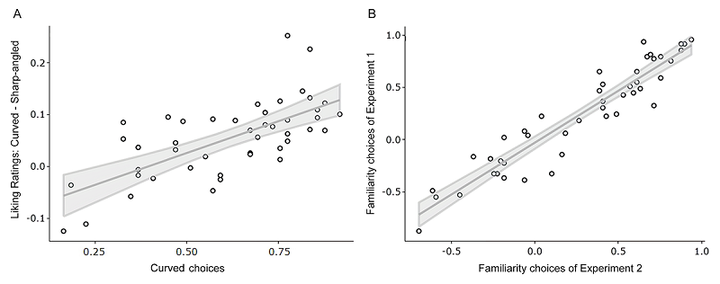Shape familiarity modulates preference for curvature in drawings of common use objects

Abstract
Drawing is a way to represent common-use objects. The contour of an object is a salient feature that defines its identity. Preference for a contour (curved or angular) may depend on how familiar the resulting shape looks for that given object. In this research, we examined the influence of shape familiarity on preference for curved or sharp-angled drawings of common-use objects. We also examined the possibility that some individual differences modulated this preference. Preference for curvature was assessed with a liking rating task (Experiment 1) and with a two-alternative forced-choice task simulating approach/avoidance responses (Experiment 2). Shape familiarity was assessed with a familiarity selection task where participants selected the most familiar shape between the curved and the angular version for each object, or whether both shapes were equally familiar for the object. We found a consistent preference for curvature in both experiments. This preference increased when the objects with a curved shape were selected as the most familiar ones. We also found preference for curvature when participants selected the shape of objects as equally familiar. However, there was no preference for curvature or preference for angularity when participants selected the sharp-angled shapes as the most familiar ones. In Experiment 2, holistic and affective types of intuition predicted higher preference for curvature. Conversely, participants with higher scores in the unconventionality facet showed less preference for the curved drawings. We conclude that shape familiarity and individual characteristics modulate preference for curvature.